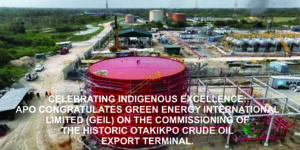Libya Eyes Historic Production Comeback as Oil Output Soars to Best Levels Since 2013
Libya’s oil industry is experiencing a remarkable resurgence, with the North African nation producing 1.4 million barrels per day in December 2024 – its strongest performance in over a decade. This dramatic recovery brings Libya tantalizingly close to its ambitious year-end target of 1.6 million barrels per day, potentially marking the country’s return to pre-2011 production glory.
The surge is being driven by major offshore developments, including the February restart of gas production at Well CC18 in the Bahr Essalam field, operated by Mellitah Oil and Gas – a joint venture between Libya’s National Oil Corporation and Italy’s Eni. Advanced well intervention techniques, including coiled tubing and acid stimulation, have addressed critical reservoir issues to ensure consistent gas flow to both domestic and European markets.
Multiple high-stakes projects are now in their execution phases. The Sabratha Compression Project, scheduled for late 2025 startup, aims to significantly enhance gas production capabilities. Meanwhile, the Bouri Gas Utilisation Project focuses on maximizing output from one of Libya’s largest offshore assets, with Eni deploying cutting-edge AI-driven technologies for real-time monitoring and optimization.
In a watershed moment for the industry, Libya’s National Oil Corporation launched its first exploration bid round in 17 years this January, offering 22 onshore and offshore blocks. The initiative has already attracted major international players including Repsol and BP, signaling renewed confidence in Libya’s oil sector despite ongoing political challenges.
However, risks remain significant. Political instability continues to threaten operations, with Libya’s eastern-based government recently threatening force majeure on oil fields and ports following attacks on NOC facilities. Such disruptions echo a 2024 shutdown that halted 700,000 barrels per day.
Despite these challenges, Libya’s $3-4 billion investment plan for 2025 prioritizes offshore infrastructure development, reinforcing the sector’s critical role in the nation’s energy future. With Africa’s largest oil reserves and decades of untapped potential, Libya’s production revival could reshape North African energy markets.
Source: oilreviewafrica.com





